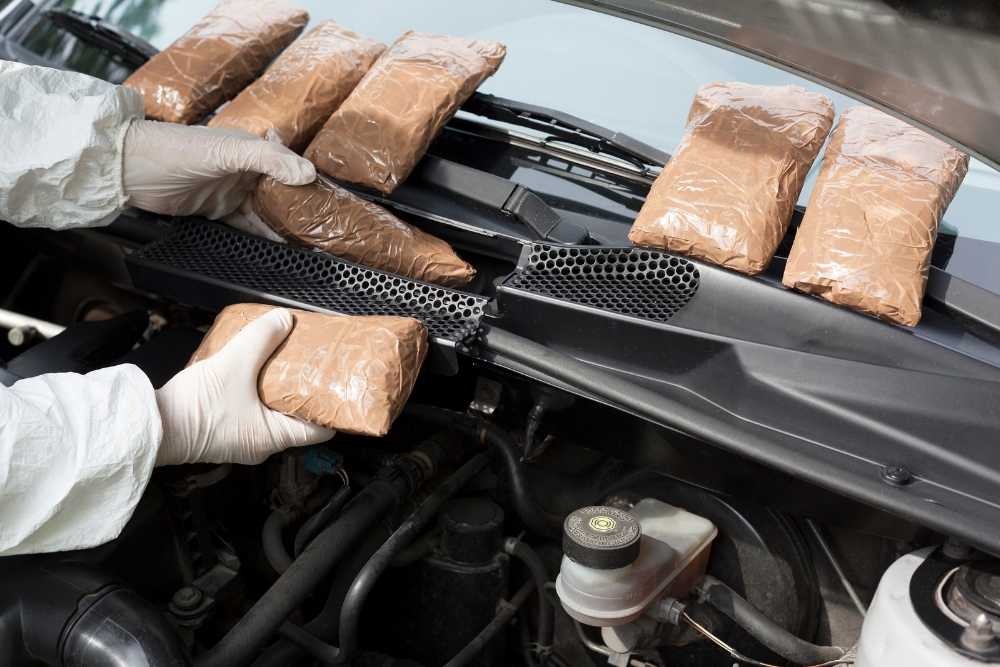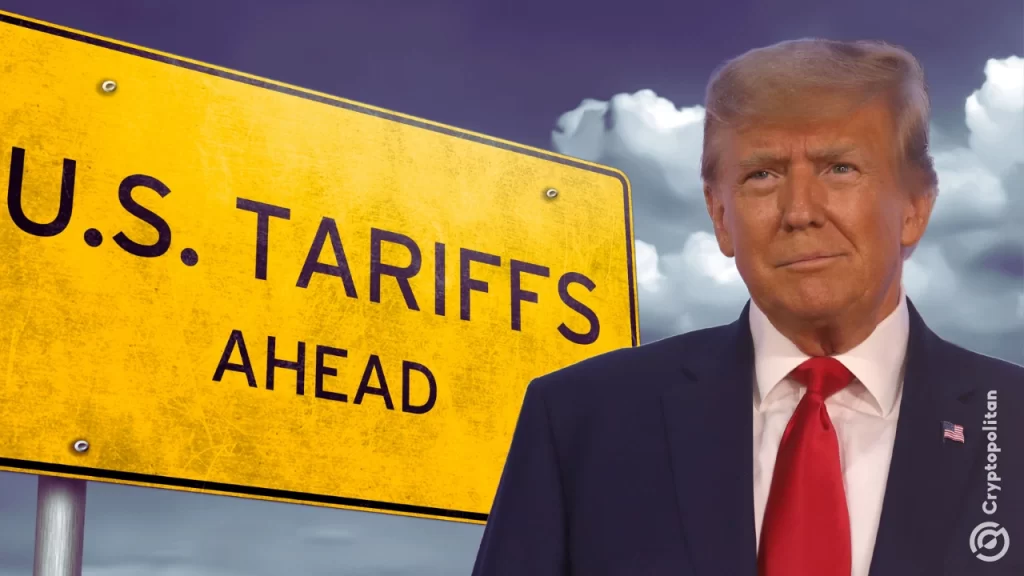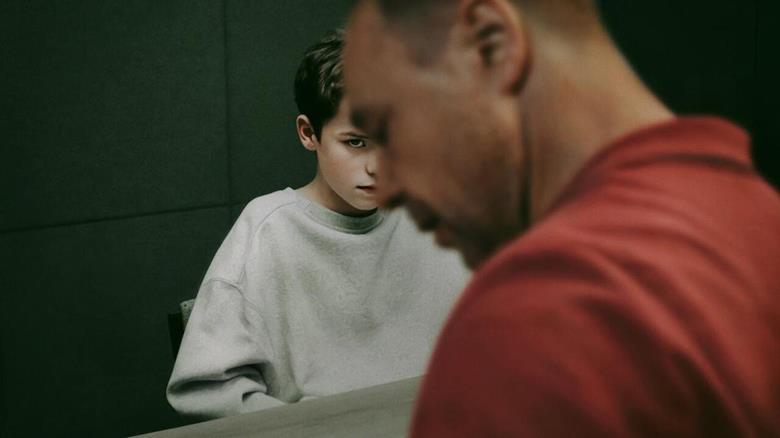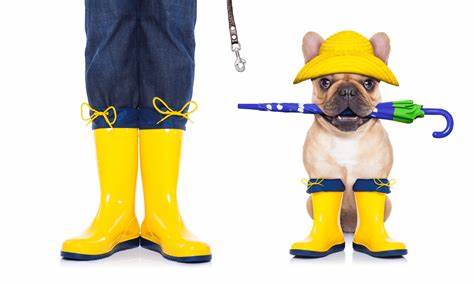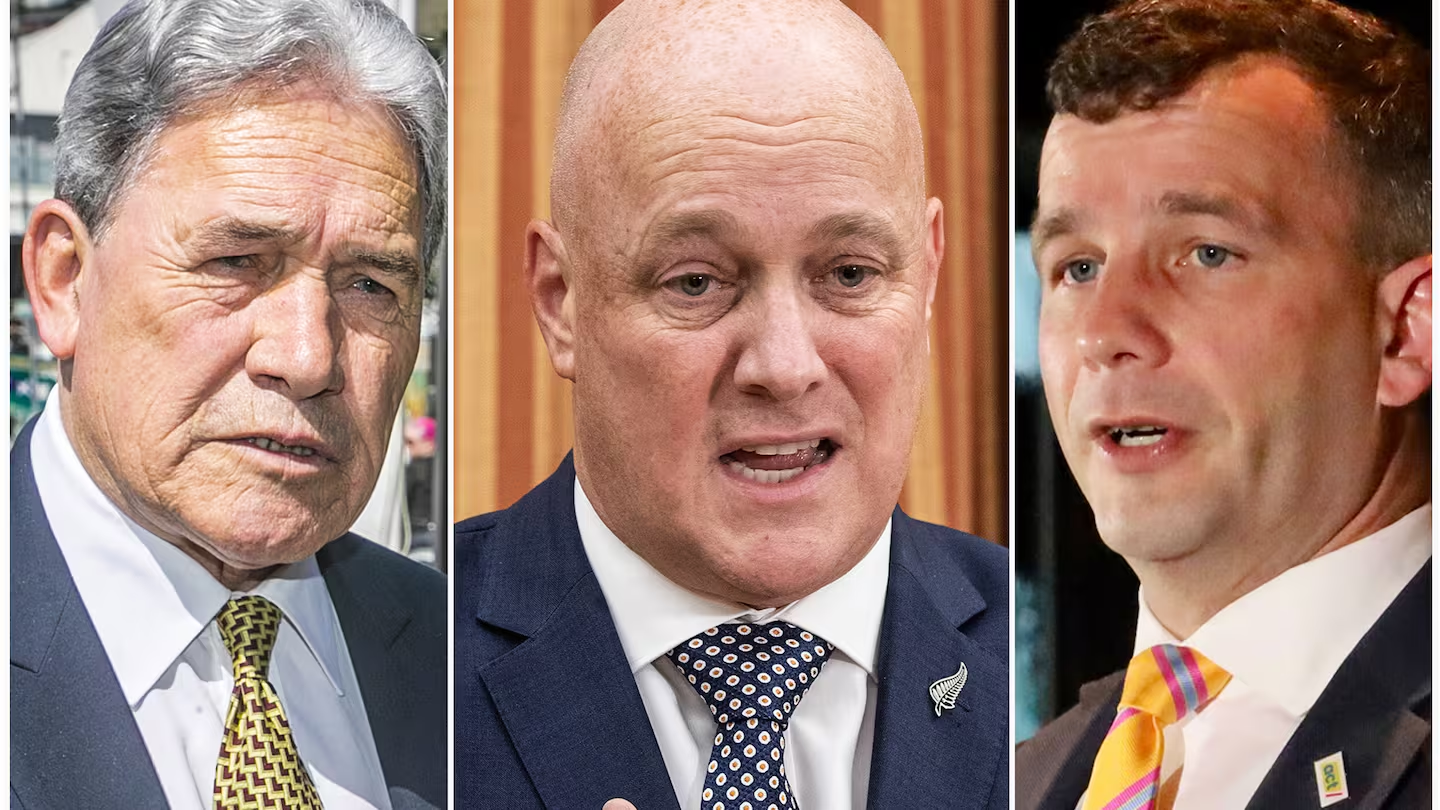By Victoria O’Brien
Information obtained from the Ministry of Primary Industries by The Daily Examiner has revealed that in the last 10 years to 2023, only around 7% (or fewer) of containers entering NZ by sea are inspected by officials and that the non-official people authorised to open these containers are not subject to police vetting.
Moreover, hundreds of sites that received containers only received a single container in 12 months, while hundreds of applications are received each year for new sites to be authorised to receive a container.
The Minister of Police, Mark Mitchell, was aware of extensive gang infiltration of the labour force in ports, even before the 2023 election. This raises serious questions as to the security of NZ’s border and the true extent of smuggling into the country.
Introduction
Most New Zealanders are under the impression that the security of our country’s border, particularly for biosecurity, is high. This impression is underscored by the stringent checking of airline passengers’ luggage at our major international airports, the litany of warnings played to arrivals and severe penalties that apply to transgressors. The paperwork required for importation of any food in particular, is lengthy and the exclusions multiple. However, how true is this?
If our border security is more porous that we are led to believe, then more than just “bugs” (repeated “fire ants” incursions are an example) are getting through. And unlike “bugs”, we cannot rely on the long ocean journey or our cooler climate to protect us. For example, the importation of illegal cigarettes is known to be rife.
The government has already acknowledged that the ban on over-the-counter pseudoephedrine availability did nothing to stop the methamphetamine epidemic, as organised crime simply smuggled in ready-made meth rather than its ingredients. And with drugs, come the illegal firearms.
The Ministry of Primary Industries is the government agency primarily responsible for the inspection of containers entering NZ. The Daily Examiner obtained information on the MPI’s inspections of containers under the Official Information Act.
We approached Andrew Hoggard, Minister for Biosecurity New Zealand and former Federated Farmers President for comment. His office referred us back to MPI, for comments that can be attributed to Andrew Spelman, Commissioner, Biosecurity Intelligence and Systems, Biosecurity New Zealand.
Container Inspections
We asked for the number of containers entering NZ in each year for the last 10 years to 31 December 2023 and the number that were inspected. MPI’s OIA was unable to provide the number of containers that arrived in NZ by air, stating that those are unloaded immediately at the airport and remain there. MPI does not have data on the number of containers that are sealed but its OIA response advised that most are sealed due to security concerns.
Industry sources advise us that in fact, a very large number of containers arrive in NZ empty and none of those are sealed. One estimate is that around 30% of containers on a ship arriving into port are empty. Such containers are mostly offloaded without internal official inspection, having been marked on the manifests as empty and stored until they are required again. Empty containers may be required to be washed, with our sources observing that refrigerated containers are more likely to be washed internally & inspected by MPI.
Container handling volumes published by the Port of Auckland and Port of Tauranga (NZ’s top 2 busiest ports) in their 2023 Annual Reports show vastly higher figures (818,810 & 1.18 million) in the form of 20-ft container equivalents or TEUs. Those volumes would include all full and empty containers, containers going to other NZ ports or transiting NZ. As they are TEU figures, a 40-ft container would be 2 TEUs. We have thus made the assumption that the figures for “number of containers” provided by MPI’s OIA response are only for containers (not TEUs) that are not empty and thus, sealed, and are those that have NZ as a final destination only.
“Containers inspected by MPI Biosecurity” include full and empty containers.
It is notable that that the percentage of containers inspected was below 7% for almost all of the last decade, hitting a low of 3.9% during covid.
Prior to covid, a figure of 10-15% was generally recognised as standard (sealed containers) for Australia and this had also been assumed for NZ. The true figure for NZ appears to be significantly lower.
We also note that since the number of containers inspected by MPI Biosecurity are for both full & empty containers (whereas the “number of containers” figure appears to only be for full containers), the actual figure for inspections of full containers will likely be considerably lower.
We asked how many inspections were carried out by other government agencies, the NZ police in particular. MPI was unable to provide this and interestingly, neither was the NZ police (asked by MPI).
Our industry sources expressed considerable surprise that the number of inspections provided by MPI was as high as it is, which confirms our hypothesis based on the figures provided (as observed above). One commented that it was rare to see the “big black MPI X-ray truck”. Another noted that most MPI inspections are cursory at best, consisting of an official briefly shining a torch in the open door at one end of a full container, likely to check for insect activity, with the container then resealed.
Commissioner Spelman’s response was, “It is not correct to suggest only 7% of arriving containers undergo biosecurity checks. All containers, including empty containers, entering New Zealand undergo biosecurity checks by trained personnel.
MPI officers do not carry out all container checks. They focus on imported cargo identified as high risk, carrying out inspections either at ports or at transitional facilities, which provide a secure location for unloading containers.
Lower risk containers are inspected at transitional facilities by accredited persons (APs), who are employed by industry, including various port companies.”
MPI Transitional Facilities and Staffing Practices
As of the end of January, there were over 4,380 MPI-approved transitional facilities, which are sites approved to receive containers. Each site is required to have at least one person who is accredited by MPI to open containers on MPI’s behalf, colloquially known as a “devanner”.
We note that opening of a container by a devanner does not constitute inspection by an MPI official.
We asked how many people were accredited devanners in each year. MPI responded that it did not hold a record for each year but that as at the end of March, there were
“18,387 persons accredited to open containers on MPI’s behalf, located across 3,759 operators. Accredited persons may be employed directly by an operator at a facility or employed as independent contractors depending on the operation of a given facility.”
We asked if the devanning inspectors were vetted by police. MPI’s OIA response was:
“All persons seeking accreditation to open containers were subject to police vetting until 2015/16. The current accreditation process now requires that applicants disclose any convictions for offences relating to fraud or dishonesty, biosecurity, or import/export business activity, disclosure of which results in a referral to the Chief Technical Officer (CTO) for review. The CTO will make the decision as to whether a Ministry of Justice Report and/or police vetting is required of an applicant.” (emphasis added)
In other words, MPI has shifted from police vetting of applicants to an honesty system of disclosure since 2017.
We also asked how many transitional facilities were audited in each year and how many had handled only a single container in 12 months, for each year. We also asked how many facilities had had their accreditation revoked for non-compliance.
MPI’s OIA response noted that, “MPI does not record the number of transitional facilities that are closed due to non-compliance. When a transitional facility has its approval revoked, a note is made in the relevant case file. However, without reviewing individual records, there is no way to distinguish transitional facilities that have closed due to non-compliance and those that have closed for other reasons.”
We spoke to a former employee of one of NZ’s major ports, that had been employed in various roles involving container handling in their long (>20 years) career. He pointed out that containers could be transported directly from a port to a transitional facility and opened by the accredited devanner at any time, without anyone else being present. Goods could be unloaded and transported away without any record. Transitional facilities could be located anywhere in the country.
In each year that MPI was able to provide data for, there were over 450 applications for new transitional facilities to be accredited, except for 2020 where there were 369. Approvals for new facilities hovered around 400 in each year, except for 2020 & 2021, where the figures were 346 & 384 respectively.
Our industry contacts also informed us of extensive outsourcing and casualisation of the workforce in major ports such as Auckland and Tauranga. NZ’s third busiest port, Lyttleton, is one exception that uses a permanent workforce of full and part-time employees.
Our industry contacts allege that one consequence of the use of casual outside labour in the ports, is significant gang infiltration of the labour force.
One of our contacts also recalled a personal interaction with the current Minister for Police, Mark Mitchell, during a June or July 2022 campaign trail meeting at the North Canterbury Deerstalkers. Mr Mitchell is said to have stated, “All the ports have gangs” in the context of gang presence in the labour force. Our contact was quick to disagree with this statement for Lyttleton Port specifically, with knowledge of the port’s hiring practices.
Commissioner Spelman’s comment on this was,
“MPI does not make employment decisions on behalf of port companies. However, MPI ensures staff employed as APs have the right skills to do their job of protecting New Zealand from biosecurity risk associated with imported containers. All APs undergo training and must be certified by MPI. APs must undertake fresh training very two years.
MPI audits transitional facilities to make sure they are meeting their biosecurity responsibilities. In 2022, MPI introduced a new way of auditing (performance-based verification) that focuses on ensuring strong biosecurity management and compliance by transitional facility operators, who are responsible for the work of APs.
The introduction of performance-based verification has seen a lift in biosecurity compliance among transitional facilities, reducing the likelihood of invasive pests and diseases establishing in New Zealand.
Last year, MPI also established a dedicated auditing team to undertake performance-based verification of transitional facilities identified as high risk. The team also undertakes audits of places of first arrival (international air and seaports).
The team is currently working towards gaining ISO 17020 accreditation from International Accreditation New Zealand. This will provide the team with independent endorsement of their auditing skills.”
Implications for Smuggling & Contraband
Low number of Inspections & Cursory Nature
With 93% (or more) of shipped containers entering NZ not inspected by an official, or opened in the presence of one, the likelihood that smuggled goods are entering NZ through these containers is very high.
At the start of this article, we drew attention to the reversal of the ban on over-the-counter pseudoephedrine therapeutics, as the ban did nothing to prevent meth availability, with meth having been smuggled into the country instead. Earlier this year, The Daily Examiner also published data on seized firearms that showed less than 5% had been on a police permit. In other words, almost all seized firearms that had a serial number, had most likely been smuggled into the country.
Our industry contacts pointed out that there was no way an inspector would be able to tell what was actually in a container without an X-ray of its contents at the very least. Any type or quantity of contraband could be hidden amongst legitimate goods.
Importers we spoke to bore this out, that MPI usually inspected containers on the basis of the country of origin. If a container was considered to be from a low-risk country, then there would be no inspections. One importer recalled containers arriving “crawling with bugs and once, a dead snake”.
Commissioner Spelman’s response to this was, “The fact that APs detect bugs, snakes, and other biosecurity items in imported containers shows the system is working well and is stopping pests and diseases at or before the border. APs are required to report any detections to MPI. MPI then advises on further action. Officers may visit the site and supervise treatment and devanning.”
One importer also claimed MPI appeared to be more concerned with revenue-generation, through “inspection fees” even when it was clear when the goods were finally received, that they had not actually been inspected.
Empty Containers
Containers marked on the manifests as empty are assumed to be so and simply parked on the wharf or moved elsewhere for storage. Some are also taken away for repair. None of these are sealed. We were told by our industry contacts that the scales on the container cranes and straddle-carriers have a tolerance of 100kg, since a full container can typically weigh tens of tonnes.
For example, a 20-ft empty container would be expected to weigh around 2 tonnes. A busy crane or straddle-carrier operator would not take particular note of a supposedly empty container that weighed 2.1 tonnes, given slight differences between scales.
While CCTV surveillance of port activity is high and thus, unloading of contraband on the wharf would be highly unlikely, that would not necessarily be the case at empty container terminals or repair facilities. Video footage at repair facilities is not usually examined unless there is an incident and such footage is deleted after several weeks.
This would allow smaller amounts of contraband to be placed in empty containers as well, with ample opportunity for retrieval even without relocating the container itself.
Labour Practices
The move to external contractors for the provision of a casual workforce in most of our major ports is a key factor in allowing organised criminal activity in our ports, according to our industry contacts. Together with the relaxation of requirements for accreditation of devanners (no police vetting since 2016/2017), it is entirely plausible that the vast majority of illegal drugs and firearms in New Zealand are smuggled into the country.
COLFO Comment
Spokesman for the Council of Legal Firearms Owners (COLFO) Hugh Devereux-Mack commented that this “aligns with a previous statement COLFO made in 2021 that highlighted police did not know the source of approximately 82% of criminal firearms.
At the time, Police Commissioner Andrew Coster stated, “Our biggest concern is firearms stolen out of the lawful fleet.” Perhaps Coster was unaware of what appears to be a significant oversight in New Zealand’s security. However, it is understandable as a tactic because targeting citizens who obey the law in a way that creates a perception of action is easier than addressing a complicated, multi-agency security failure.
While the police, previous governments, and anti-gun lobby groups focused their attention on convincing the public that straw buyers are the primary source of criminal guns, this new information suggests that the easiest source is simply importing guns through these unchecked shipping containers.
COLFO hopes that the current Police Minister investigates these recent sealed container concerns. If they are found to be accurate, we hope Minister Mitchell redirects resources from the firearm register, which has failed to reduce gun crime and is expensive. Instead resources should be invested to support efforts to cut the supply of illegal guns and drugs to the criminal underground via illegal importation.”
Customs Comment
We approached Casey Costello, Minister for Customs, for a comment on a draft of this article prior to publication. A Customs spokesperson responded,
“The New Zealand Customs Service screens and risk assesses all goods imported into New Zealand using a layered and multi-faceted approach. This includes, but is not limited to, intelligence received from domestic and international partner agencies, sophisticated software to scan all electronic entries, manual validation of high-risk shipments, x-rays, detector dogs, and physical inspections by our officers.
Customs interacts with imported goods when a potential border risk has been identified through the use of risk profiling systems and has determined that an x-ray and/or physical examination is required to confirm and mitigate possible border threats.
The sort of information which feeds into Customs’ intelligence gathering and risk assessment includes analysis of seizure trends in New Zealand and internationally which helps build a picture of what risk shipments look like. There are a number of factors that might make a shipment a potential risk and shipments which fit such factors are referred for further interaction. Non-risk shipments are cleared to not delay legitimate imports into New Zealand.
Customs continually improves and enhances its targeting system based on the analysis of data, results, and intelligence which refines the agency’s ability to select specific imports that require further physical inspection. This supports the effective movement of legitimate international trade through New Zealand’s border, while ensuring that high-risk shipments are treated appropriately.
Goods requiring further interaction are dealt with in licensed Customs Controlled Areas (CCA). CCAs are secure, controlled areas where Customs monitors and conducts activities. They include examination areas, storage sites and passenger processing areas.
Customs conducts regular training and awareness events with industry which strengthen and build partnerships to deter and detect insider threats. This work also includes initiatives to improve information and intelligence sharing with industry partners.
In addition, Customs operates an anonymous notification system called Border Protect where people can report suspicious and potentially criminal behaviour. Suspicious activity reported by locals in New Zealand’s Far North helped intercept 500 kilograms of methamphetamine which an organised crime syndicate was attempting to land at Ninety Mile Beach.”
Our industry contacts note that this accords with their own experience that any interceptions of contraband, such as that publicised recently by the NZ Defence Force, are due to “snitches” and not from proactive screening of inbound foreign goods.
They commented that, “It would appear that like the police, customs is largely reliant on intel passed onto them. A lot of this is of dubious quality and the same goes for their risk profile systems remember about the how often the Xray truck is sighted. The whole purpose of successful smuggling is to make it sure it does not look like it has a “risk profile”, judging by the amount of drugs, firearms and contraband in NZ their resourcing and methods are not doing too good.”
Other Ministerial Comment
The Associate Minister of Justice Nicole McKee and the Minister for Police were also emailed to request comment on this article.
McKee’s officials declined to comment.
No response was received from Mark Mitchell or his officials.

